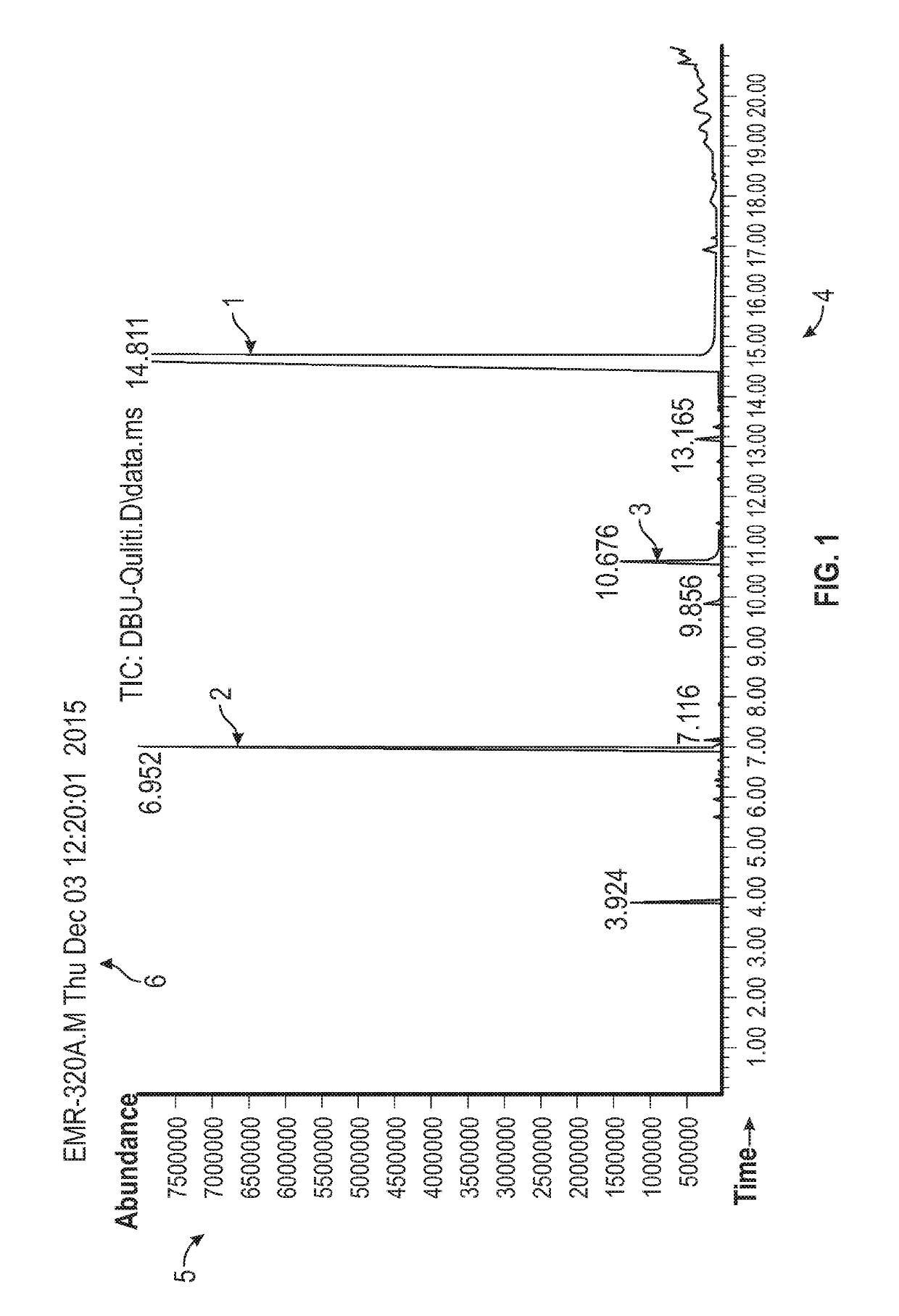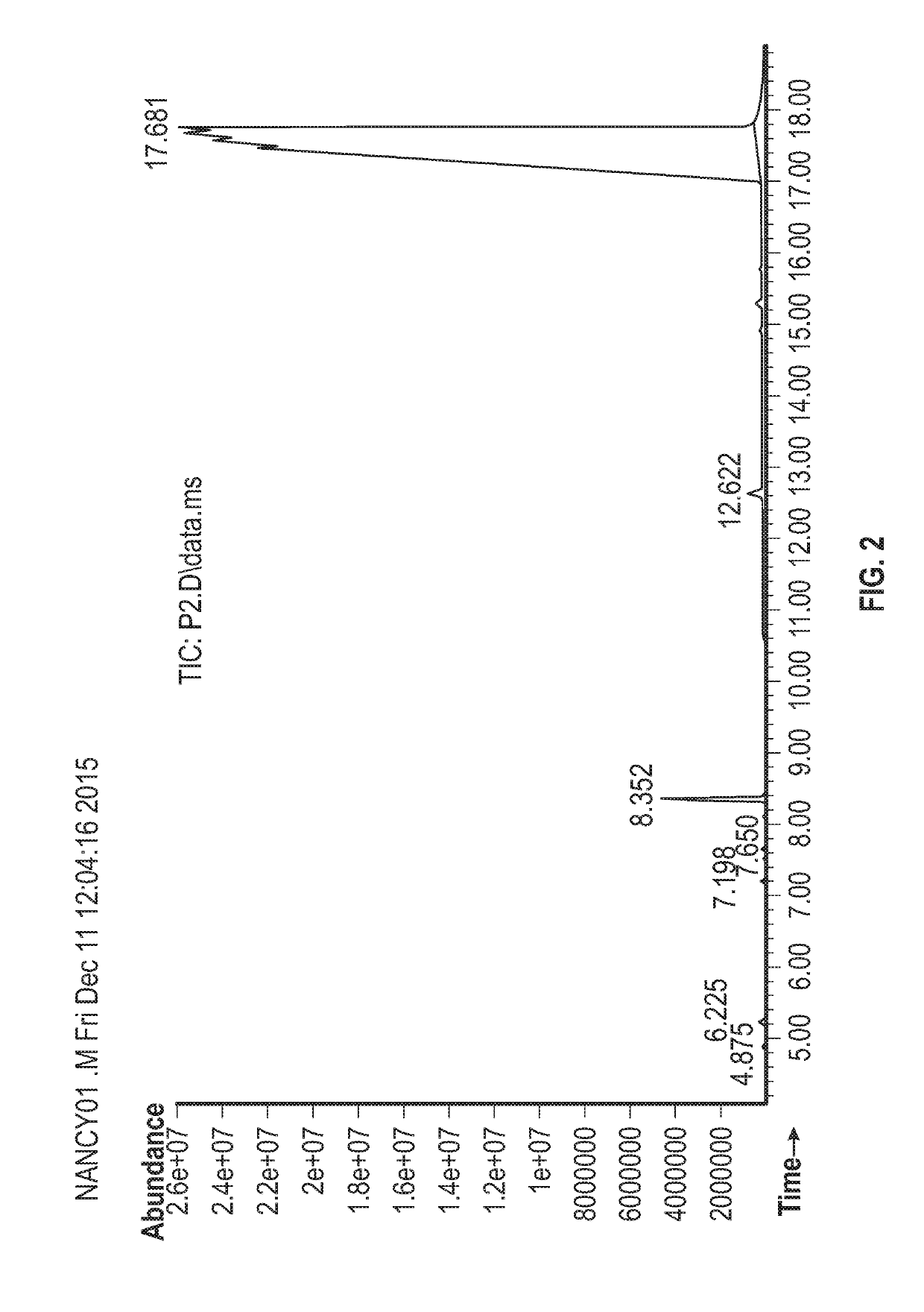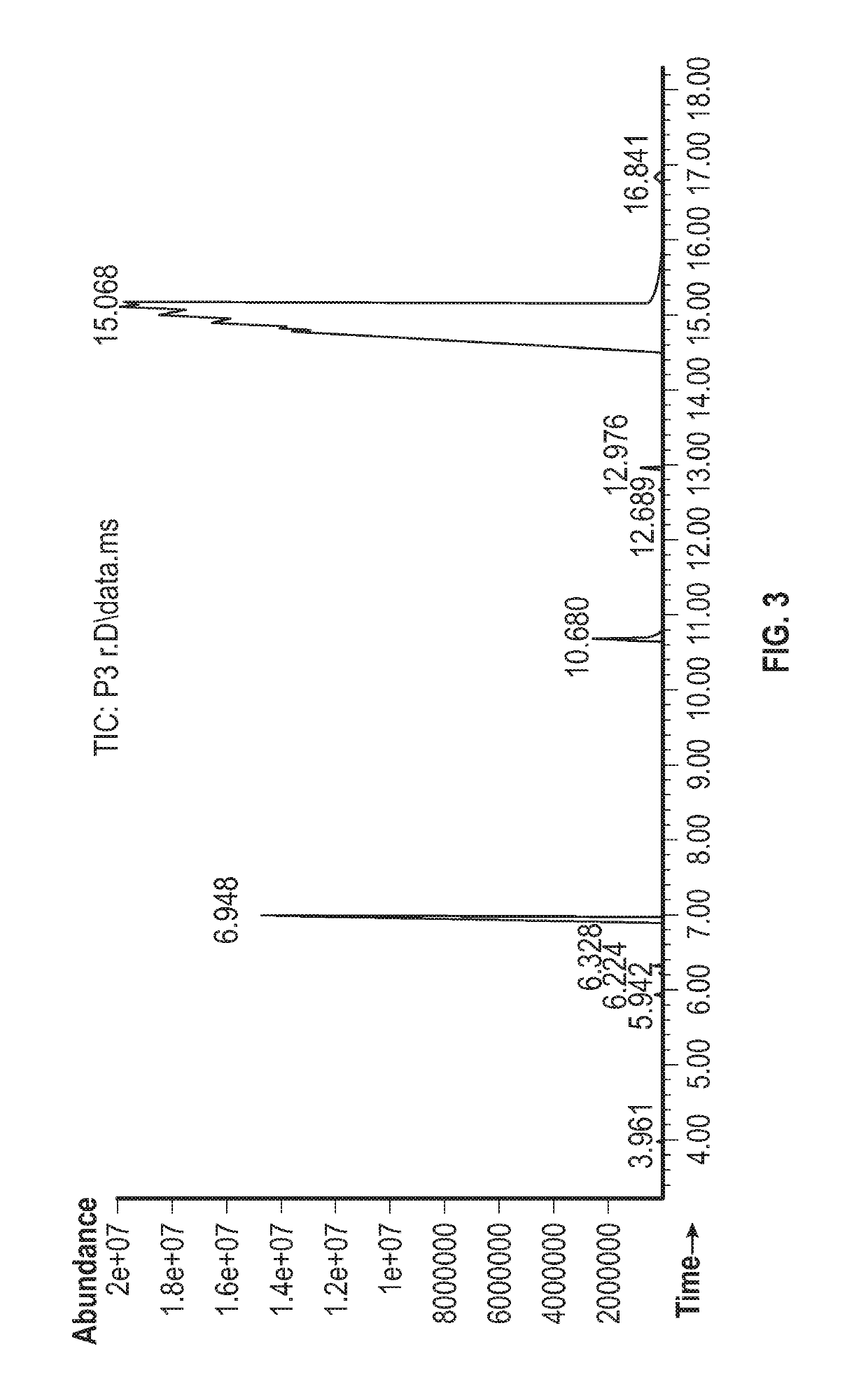Catalysts supported on natural polymers for the production of carbonates from co2
a technology of natural polymers and catalysts, applied in the direction of catalyst activation/preparation, organic compound/hydride/coordination complex catalysts, physical/chemical process catalysts, etc., can solve the problems of low activity of metal catalysts, use of transition metals, and high cost of metal catalysts, and achieve high efficiency and high reactivity
- Summary
- Abstract
- Description
- Claims
- Application Information
AI Technical Summary
Benefits of technology
Problems solved by technology
Method used
Image
Examples
example 1
[0057]According to the general procedure for the preparation of catalyst, a mass between 0.1 and 10 g, preferably between 0.5 and 5 g of sodium iodide, is mixed with a mass of chitosan between 0.1 and 10 g, preferably between 0.5 and 5 g, in water. Such mixture is stirred at a temperature between 10 to 50° C., preferably between 20 to 40° C. for 0.1 to 10 h, preferably between 0.5 and 5 h. Afterwards, the mixture is evaporated with vacuum at a temperature between 40 and 200° C. preferably between 50 and 100° C. for 2-24 h, preferably between 4 and 12 h. The co-catalyst will be used during the preparation of the reaction.
Example 2
[0058]According to the general procedure for the preparation of the cycloaddition reactions: In the reaction zone between 5 to 25 g of propylene oxide are added and between 0.1 and 5 g of catalyst system sodium iodide / chitin (between 1 to 5 wt. %) After that between 10 and 200 micrograms of triethyl-amine are added as co-catalysts (between 5 and 50 wt. % res...
example 2
[0061]According to the general procedure for the preparation of the cycloaddition reactions: in the reaction zone, 5 to 25 g of hexylene oxide (1, 2-epoxyhexane) are added and between 0.1 and 5 g of catalyst system potassium iodide / chitin (between 1 and 15 wt. %). Furthermore between 10 and 200 micrograms of DBU as co-catalyst are added (between 5 to 50 wt. percent respective to the metal salt). The mixture of these materials is taken to the reactor and subjected to an initial pressure of 200 to 500 psi and further heated to a temperature between 50 and 200° C., preferably between 60 and 150° C. depending on the nature of the epoxide to be tested. The yields are calculated directly from the reaction mixture using a gas chromatograph coupled with a mass spectrometer.
[0062]FIG. 18 shows the influence of the mass composition on the catalyst KI / DBU, in the yield of this reaction, in accordance with an embodiment of the present disclosure.
example 3
[0063]According to the general procedure for the preparation of the cycloaddition reactions: in the reaction zone between 5 to 25 g of cyclohexene oxide and between 0.1 to 5 g of catalyst system potassium iodide, chitin (between 1 and 15 wt. %) are added. After that, between 10 and 200 micrograms of DBU area added as co-catalyst (between 5 to 50 wt. % respective to the metal salt). Such mixture is taken to the pressure reactor and subjected to a carbon dioxide pressure of 100-800 psi, preferably between 200 and 500 psi and heated to a temperature of 50 to 200° C., preferably between 60 and 150° C. according to the nature of the epoxide to be tested. After de reaction time, the reactor is taken to an ice bath until it gets room temperature, afterwards the excess CO2 is released and the mixture is stirred for 0.5 h. the yields are calculated directly from the reaction mixture using a gas chromatograph coupled with a mass spectrometer.
[0064]Table 2 shows the influence of the temperatur...
PUM
| Property | Measurement | Unit |
|---|---|---|
| Temperature | aaaaa | aaaaa |
| Temperature | aaaaa | aaaaa |
| Temperature | aaaaa | aaaaa |
Abstract
Description
Claims
Application Information
 Login to View More
Login to View More - R&D
- Intellectual Property
- Life Sciences
- Materials
- Tech Scout
- Unparalleled Data Quality
- Higher Quality Content
- 60% Fewer Hallucinations
Browse by: Latest US Patents, China's latest patents, Technical Efficacy Thesaurus, Application Domain, Technology Topic, Popular Technical Reports.
© 2025 PatSnap. All rights reserved.Legal|Privacy policy|Modern Slavery Act Transparency Statement|Sitemap|About US| Contact US: help@patsnap.com



